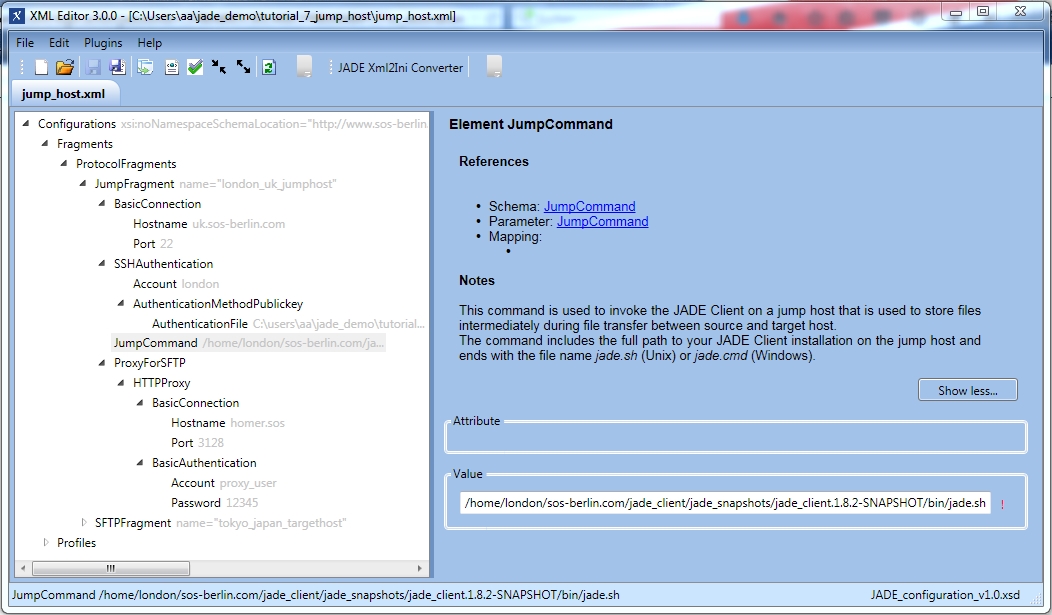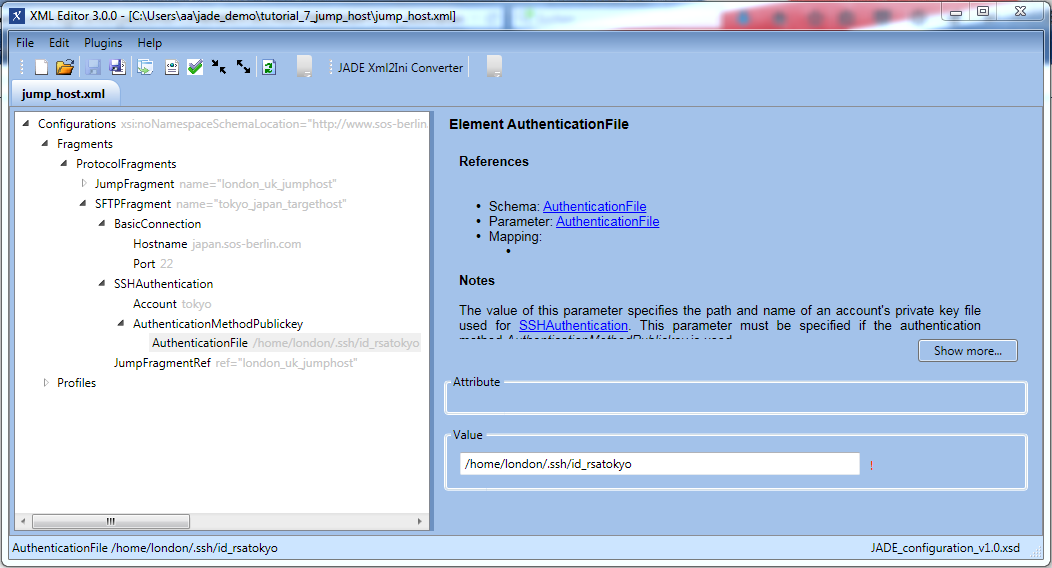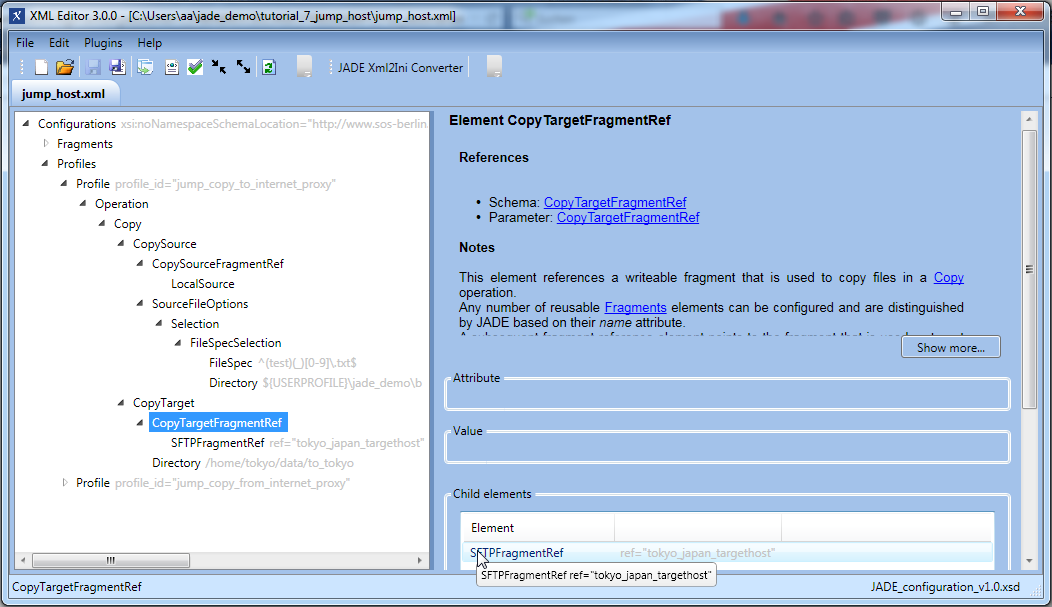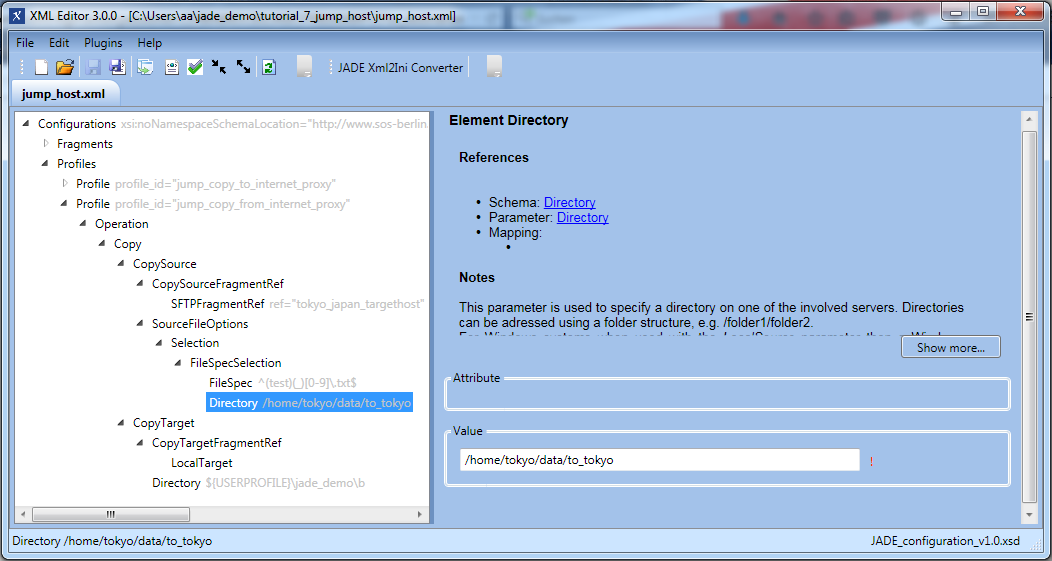...
This tutorial describes the use of the SOS XML Editor to generate the necessary transfer configuration file. The Editor uses an XSD schema to generate and validate the JADE configuration. In addition, the Editor is able to generate the the new XML format that will be introduced with release 1.11 of JADE. The use of the Editor is intended to simplify and speed up the configuration process, particularly for complex file transfer situations.
Other JADE Tutorials
This tutorial is part of a series of tutorials describing how to get started with using the JADE Client via its Command Line Interface and configuring simple file management tasks.
Previous tutorials in this series are:
- Getting Started and Downloading files
- Simple File Selection
- More Advanced File Selection
- Checking files for completeness
- Public / Private Key Authentication
For setting-up and running the examples see Using the tutorials with the JADE Client Command Line Interface
Use Case
Consider the situation in an organization where security restrictions prohibit direct file transfer between parts of the organization network and the Internet and between different parts of the organization.
...
- The user can only reach the Internet via a proxy server (Homer).
- The Japan server can only be reached via a jump host in a so-called demilitarized zone (DMZ) on a server UK.
The jump host already has a JADE command line client installed to enable file transfer across the DMZ. - Direct connections between the user's computer (localhost) and the Internet and to the target server (Japan) are blocked.
Background Information:
- Jump Host Architecture
- How to ..... Jump Host ...
Configuration
The jump fragment
The first step is to configure the jump protocol fragment for the London server, as shown in the next screenshot.
This configuration fragment is identified by the name attribute of the JumpFragment parameter and as can be seen in the screenshot has three main components: a BasicConnection element and an SSHAuthentication element and the ProxyForSFTP element. Detailed descriptions of all these elements can be found in the relevant linked Parameter Reference sections linked.
The JumpCommand parameter specifies the operation that is to be carried out by the JADE client on the jump server.
The AuthenticationFile element specifies the path to the RSA key file on the user's local file system that is used to authenticate the user on the jump server.
The target fragment
- The second step is to configure the jump protocol fragment on the London server, as shown in the next screenshot.
- This element specifies the parameters required for the JADE client on the jump host to access the target server.
- As can be seen from the screenshot the fragment is protocol-specific and contains a JumpFragmentRef parameter which specifies the name of the JumpFragment element to be used to access the target server.
- This means that it is only necessary to specify the target server and the jump host will be automatically added once the JumpFragment has been configured and referenced for the target.
- Note the JumpFragmentRef parameter, which specifies the jump fragment configured above.
- The second step is to configure the jump protocol fragment on the London server, as shown in the next screenshot.
The transfer profiles
To the Internet
The next screenshot shows the transfer profile specifying the operation to be carried out (copy), the operation source (local) and target (the Japan server accessed using the Tokyo account via the UK jump server, specified using the SFTPFragmentRef parameter)From the Internet
The next screenshot shows the profile configuration required to transfer the same files back from the Japan server to the user's local file system via the jump host and proxy server.
This profile can be seen to be very similar to the transfer_to_internet profile shown above and illustrates how relatively simple this configuration can be generated.
Generation of the settings.ini configuration file
- The XML Editor can save configurations in XML format using the standard Save or Save as buttons shown in the editor task bar. This file is compatible with the JADE version 1.11 described ...The JADE Xml2ini Converter Button in the task bar causes the Editor to generate a
settings.inifile that is compatible with earlier JADE releases.
Calling the transfer operation
A jump host file transfer operation is called in exactly the same manner as a 'standard'
Download Configuration Files



